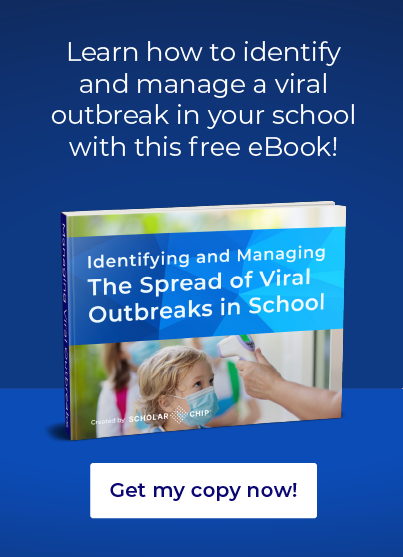According to the Mayo Clinic, COVID-19 can present differently in children than in adults. Not only if their infection rate reportedly lower, but if they do get the virus, there isn’t as high a risk that they’ll get severely ill. If children are infected with COVID-19, they regularly have symptoms similar to the common cold, including fever, runny nose, muscle aches, fatigue, and cough, along with vomiting and diarrhea.
Though it is a comfort to many parents that children do not often have severe cases of COVID-19, this means that its symptoms are more difficult to identify and diagnose. Children with mild or even asymptomatic COVID-19 cases can still spread it to others. This raises a big question about in-person education: how can we stop the spread of a disease that may present mildly in school-age populations?
Despite these difficulties, there are many steps to take in stopping the spread of illness in your school. Here are four of them.
Communicate with parents about the risk of asymptomatic or mildly-symptomatic cases.
In a Chinese study, 90% of children who tested positive for COVID-19 had either no symptoms or mild ones. However, even the mildest case of COVID-19 is contagious and can be spread to others.
That’s why it’s so important to communicate with parents to keep their children home from school if they are sick, even if only a little. Make sure to mention the symptoms to keep parents on high alert for any of them in their children. Students can also be made aware of these symptoms so they can report them to their parents if they start feeling unwell.
Encourage students to get tested for COVID-19 if they’ve been in contact with an infected person or if your area is seeing community spread.
With mild symptoms, it can be difficult to know when and if children need to be tested for the disease. Again, it’s essential to communicate with parents that they should test their children even if they don’t seem that ill. In particular, parents should have their children tested for the virus if they’ve come into contact with someone who is sick.
Alternatively, if there is considerable community spread in your area, sick children with even minimal symptoms should also be tested before returning to school. Testing is the best way to prevent asymptomatic cases—around 35% of the total—from infecting others.
Designate an on-campus room where students with even mild symptoms can be quarantined.
One of the most effective ways of stopping the spread of illness is being extremely cautious. That means if a student feels even a little unwell, they should be quarantined away from other students and staff because they can still spread the disease.
The standard advice to “stick it out” doesn’t apply to COVID-19. Instead, it’s crucial to exercise an abundance of caution in removing the student from the school population and quarantining them until they can be picked up by their parents.
Implement contact-tracing plans for stopping the spread of illness if a student is diagnosed with the virus.
Contact tracing is the best method for making sure that a sick student significantly has not increased virus spread. To do this, Johns Hopkins recommends tracing everywhere that a student has been and letting others know that they may have been infected. Then they, too, can quarantine to ensure that the disease won’t spread further.
While contact tracing is often focused on interviewing someone who has been diagnosed with COVID-19, an even more effective method is using technology for tracking. ScholarChip’s One Card can simplify this. Each student should be given a unique ID card; this is their digital thumbprint on campus. Whenever entering a building or a classroom, a student will swipe this card on the Secure Door Access portal.
Then, if a student is infected with COVID-19, your contact-tracing team can use this information to contact other students and staff who were in a space with the sick student for an extended period.
You can also improve the effectiveness of your contact tracing program by deploying ScholarChip’s Visitor Management system. This ensures that every person who visits your campus checks in when they first arrive and when they’re about to leave. This way, you can include visitors in your contact-tracing program, a particularly significant step to prevent community spread of the illness.
As we continue to face uncertainty about the 2020-2021 school year, it’s important to plan to stop the spread of illness in your school. Identifying mild symptoms, encouraging testing and quarantining, and reducing a sick child’s impact on other students and staff are critical. By implementing these ideas, you’ll be a much better place to safely open your doors.
The ScholarChip team is dedicated to helping school leaders maximize the safety and well-being of students and the entire school community.
Now sure what you should do to be able to identify and manage the spread of a viral outbreak in your school or school district? Feel free to chat with one of our school crisis communication specialists today!


